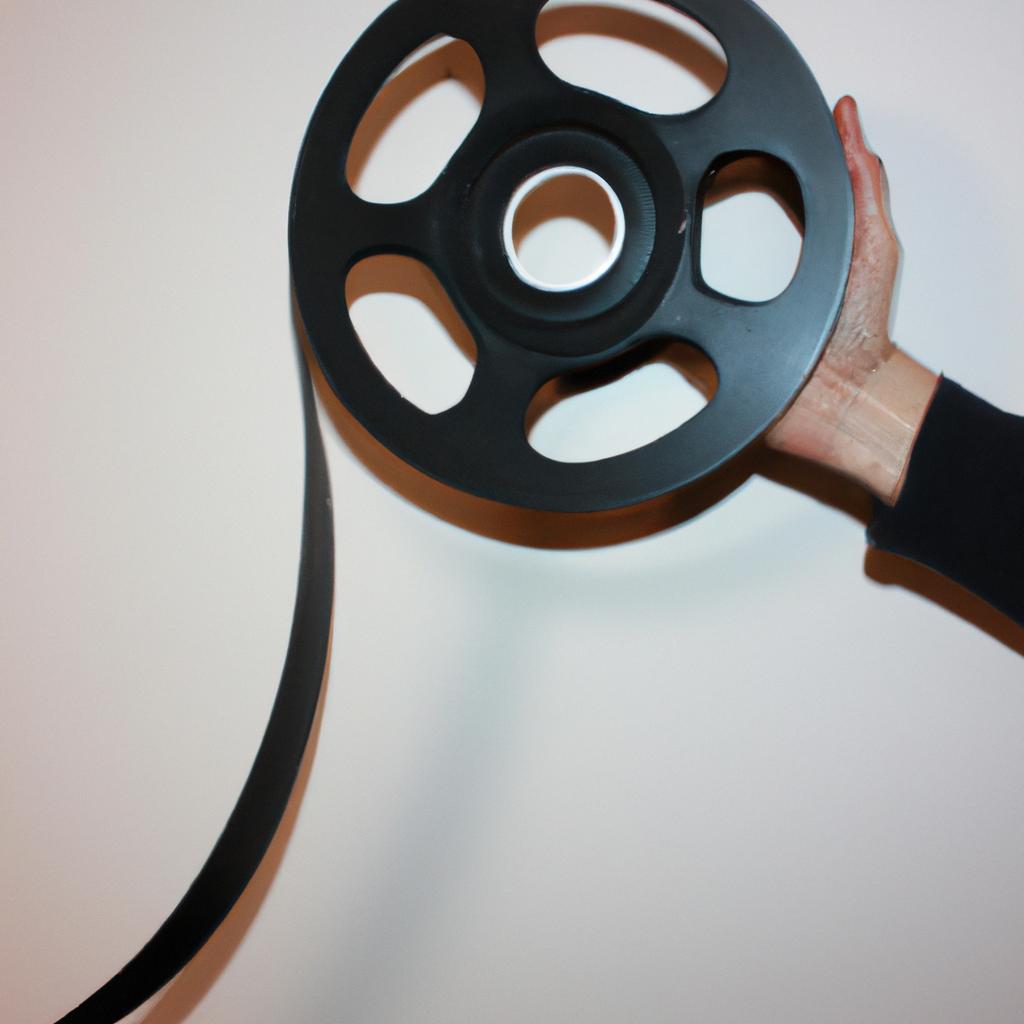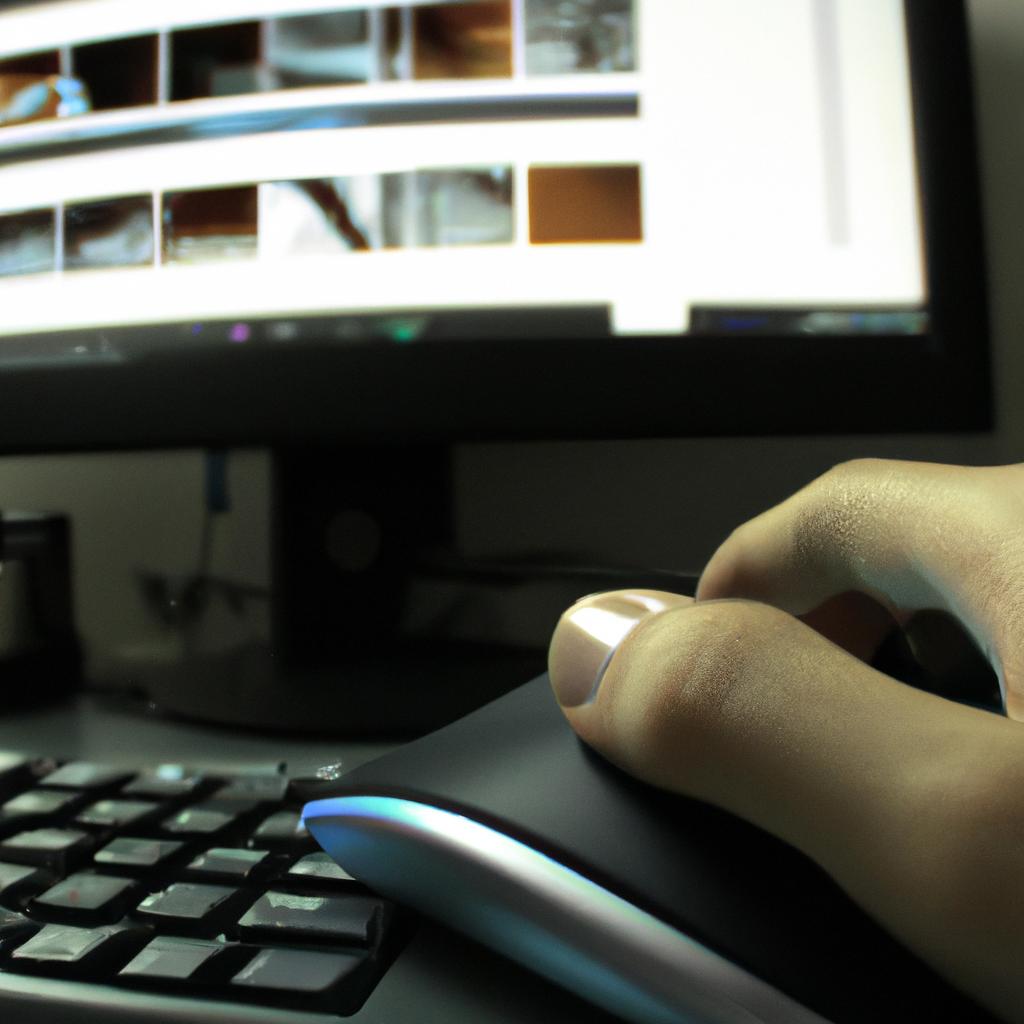The Art of Film: A Comprehensive Guide to the World of Movies in Arts and Entertainment

Film is an art form that has captivated audiences for over a century, offering a unique blend of visual storytelling and creative expression. From the early silent films to the modern blockbusters, movies have become an integral part of our cultural landscape. This comprehensive guide aims to provide readers with a deeper understanding of the art of film by exploring its history, techniques, and impact on society.
To illustrate the power of film as an artistic medium, consider the case study of “Citizen Kane.” Released in 1941 and directed by Orson Welles, this iconic masterpiece revolutionized the way stories were told on screen. Through innovative Cinematography, narrative structure, and complex character development, “Citizen Kane” challenged traditional filmmaking conventions and pushed boundaries within the industry. By examining this influential work along with countless other examples from different eras and genres, we can gain insights into how filmmakers use their craft to convey emotions, provoke thought, and engage audiences on a profound level.
In addition to delving into specific films and their significance, this guide will explore various aspects of the filmmaking process. From scriptwriting to directing, editing to sound design; each step plays a crucial role in bringing stories to life. Furthermore, we will examine how film intersects with other art forms, such as music, costume design, and production design. The collaborative nature of filmmaking allows for the integration of different artistic disciplines to create a cohesive and immersive experience for viewers.
Moreover, this guide will address the impact of film on society. Films have the power to shape public opinion, challenge social norms, and spark important conversations about pressing issues. By analyzing films through a cultural lens, we can better understand how they reflect and influence the world around us.
Throughout this comprehensive guide, readers will gain a deeper appreciation for the artistry behind film and develop a critical eye for analyzing movies. Whether you are an avid moviegoer or aspiring filmmaker, this guide aims to enhance your understanding of the intricacies of film as an art form. So let’s embark on this cinematic journey together!
The Role of Performers in Bringing Characters to Life
One of the most captivating aspects of film is the ability of performers to breathe life into characters, transporting audiences into new worlds and narratives. Through their skillful portrayal, actors and actresses immerse themselves into their roles, capturing the essence of a character’s emotions, thoughts, and actions. For instance, consider the case study of Meryl Streep’s transformative performance as Margaret Thatcher in “The Iron Lady.” Streep flawlessly captured Thatcher’s mannerisms, speech patterns, and expressions, effectively embodying the iconic figure on screen.
Performers play a crucial role in bringing characters to life by infusing them with depth and authenticity. They use various techniques such as physicality, voice modulation, and emotional range to create believable performances that resonate with audiences. This requires meticulous research and preparation as they delve into the psyche of their characters, understanding their motivations and inner conflicts.
To evoke an emotional response from viewers, performers often employ powerful acting techniques. Here are four key methods used by actors:
- Method Acting: Immersion into the character’s mindset through personal experiences and emotions.
- Emotional Memory: Drawing upon past memories or intense feelings to recreate specific emotions required for a scene.
- Physical Transformation: Altering one’s appearance or body language to match the characteristics of the character being portrayed.
- Improvisation: Spontaneously reacting to stimuli within a scene to add authenticity and naturalness.
In addition to these techniques, performers frequently collaborate closely with directors who guide them towards realizing their creative vision. Directors provide valuable insights into how characters should be interpreted while allowing room for artistic interpretation from actors. The exchange between director and performer enhances the overall quality of a film by fostering collaboration based on mutual respect and understanding.
As we move forward into exploring ‘The Visionary Behind the Camera: Capturing the Director’s Creative Vision’ section, it becomes evident that directors rely heavily on performers to bring their ideas to life. By understanding the multifaceted role of performers, we gain a deeper appreciation for the artistry and craftsmanship involved in the creation of memorable characters on screen.
The Visionary Behind the Camera: Capturing the Director’s Creative Vision
From the moment a director conceives an idea for a film, their creative vision takes shape. As we delve into the world of filmmaking, it becomes evident that capturing this vision requires a skilled and visionary individual behind the camera. The cinematographer plays a crucial role in translating the director’s ideas into captivating visuals on screen. By skillfully manipulating various elements such as lighting, composition, and camera movement, the cinematographer enhances the storytelling experience and contributes to the overall aesthetic appeal of the film.
To illustrate this concept further, let us consider a hypothetical scenario where a director wants to evoke feelings of nostalgia in their audience through visual cues in a coming-of-age drama set in the 1980s. The cinematographer collaborates closely with the director to create an appropriate visual language that transports viewers back in time. Through careful selection of warm color palettes reminiscent of vintage photography and strategic use of soft lighting techniques, they establish an atmosphere that evokes sentiments of fond remembrance.
The artistry involved in cinematography can be better appreciated by examining some key aspects integral to its execution:
- Lighting: Whether utilizing natural light or creating artificial lighting setups, the right choice and placement of lights are essential for setting moods and emphasizing important narrative moments.
- Composition: Framing shots effectively is crucial to guide viewers’ attention within each scene. A well-composed shot not only conveys information but also adds depth and meaning to what unfolds on screen.
- Camera Movement: Purposeful movements such as tracking shots or steadicam sequences contribute dynamism and engage audiences more intimately with characters and their surroundings.
- Visual Effects: In collaboration with post-production teams, cinematographers sometimes incorporate visual effects seamlessly into footage to enhance storytelling or create fantastical worlds beyond reality’s constraints.
In considering these aspects alongside countless others specific to each project, it becomes clear how vital cinematography is in bringing directors’ visions to life while simultaneously engaging audiences emotionally.
Transitioning seamlessly into the subsequent section about enhancing the visual appeal through cinematography, we explore how this art form collaborates with other components of film production to create a visually stunning and captivating experience for viewers.
Enhancing the Visual Appeal: The Importance of Cinematography
In the previous section, we explored the role of the director in shaping a film and bringing their creative vision to life. Now, let us delve into another crucial aspect of filmmaking that greatly contributes to its visual appeal – cinematography. To illustrate this point, consider a hypothetical scenario where two films with similar plotlines are released simultaneously. While both narratives may be intriguing, it is through cinematography that one film manages to captivate audiences on a deeper level.
Cinematography encompasses various elements such as lighting, camera angles, framing, and composition. These technical choices not only help tell the story but also evoke specific emotions within viewers. For instance, by utilizing natural lighting and warm colors in key scenes, a film can create an inviting atmosphere that resonates with audiences emotionally. On the other hand, using shadowy lighting and high contrast can generate feelings of suspense or mystery.
To further emphasize the significance of cinematography in enhancing visual storytelling, consider the following bullet points:
- The use of handheld cameras to simulate chaos or urgency.
- Wide-angle shots to convey openness or vulnerability.
- Low-angle shots to depict power dynamics or dominance.
- Dutch angles (tilted frames) to establish disorientation or unease.
Additionally, take a moment to examine this table showcasing different cinematic techniques employed for distinct emotional effects:
| Technique | Emotional Effect |
|---|---|
| Slow motion | Heightened drama |
| Rack focus | Shifted focus |
| Overhead shot | Objective perspective |
| Point-of-view | Subjective immersion |
Through these carefully chosen techniques, filmmakers have the power to immerse audiences in unique worlds while evoking specific emotional responses.
As we conclude our exploration of cinematography’s impact on visual storytelling, we transition seamlessly into our next section discussing “Crafting Compelling Stories: The Art of Screenwriting.” By understanding the role of cinematography, we gain a deeper appreciation for how it enhances the narrative and sets the stage for captivating storytelling.
Crafting Compelling Stories: The Art of Screenwriting
Now, let us delve deeper into this art form that captures moments on screen through skillful camera work, lighting techniques, and composition.
Imagine a scene where the protagonist is immersed in deep contemplation on a foggy bridge at dusk. Through careful manipulation of light and shadows, cinematographers can create an atmosphere that mirrors the character’s state of mind. This ability to visually evoke emotions and convey meaning is at the heart of effective cinematography.
To further understand its significance, consider these key points:
- Camera angles: By experimenting with different angles such as high-angle or low-angle shots, cinematographers can manipulate perspective to emphasize power dynamics or evoke specific emotions.
- Lighting techniques: Strategic use of lighting can set the mood, highlight important elements within a frame, or create dramatic effects like chiaroscuro.
- Composition: Through thoughtful framing and placement of subjects within the frame, cinematographers guide viewers’ attention and enhance storytelling by emphasizing certain details over others.
- Color palette: The choice of color scheme contributes to the overall tone and atmosphere of a film. Warm colors may suggest intimacy or comfort while cool tones may evoke unease or melancholy.
To illustrate these concepts further, let’s take a look at some examples in this table:
| Film | Director | Notable Cinematographer |
|---|---|---|
| “Blade Runner” | Ridley Scott | Jordan Cronenweth |
| “Roma” | Alfonso Cuarón | Alfonso Cuarón |
| “The Grand Budapest Hotel” | Wes Anderson | Robert Yeoman |
As we move forward in exploring the world of movies, it becomes evident that cinematography is not merely a technical aspect of filmmaking. It is an art form that allows filmmakers to convey emotions, create meaning, and immerse audiences in the cinematic experience. Seamlessly Stitching Scenes: The Impact of Film Editing will be our next focus, where we will explore how editing shapes narratives and influences storytelling techniques.
Seamlessly Stitching Scenes: The Impact of Film Editing
Continuity and coherence are essential elements in the art of filmmaking. Through the meticulous process of film editing, filmmakers have the power to shape their stories, enhance emotions, and create a seamless experience for viewers. Just as an expert tailor skillfully stitches together various pieces of fabric to form an exquisite garment, so too does a skilled editor weave together individual shots into a cohesive narrative tapestry.
An exemplary case study that demonstrates the impact of film editing is Christopher Nolan’s mind-bending thriller “Inception.” Through masterful editing techniques, such as cross-cutting between multiple dream levels and manipulating time through parallel storylines, Nolan creates a sense of disorientation that mirrors the characters’ experiences within dreams. By seamlessly transitioning between different scenes and perspectives, he immerses audiences in a labyrinthine world where reality becomes blurred.
The significance of effective film editing cannot be overstated. Here are some key reasons why this aspect plays a crucial role in shaping the final outcome:
- Pacing: The rhythm established by the editing choices can influence the overall tempo and energy of a film.
- Emotional Impact: skillful edits can heighten tension or evoke specific emotional responses from viewers.
- Narrative Structure: Editors determine how scenes flow together, ensuring clarity and logical progression.
- Visual Cohesion: Through careful selection and arrangement of shots, editors maintain visual continuity.
To further illustrate these points, consider the following table showcasing examples from iconic films:
| Film | Editing Technique | Effect |
|---|---|---|
| “Psycho” | Rapid cuts during murder scene | Creates intense suspense |
| “2001: A Space Odyssey” | Match cut | Establishes thematic connection |
| “Birdman” | Long tracking shots combined with hidden cuts | Enhances illusion of one continuous take |
| “Whiplash” | Quick cuts and rhythmic editing | Mirrors the intensity of the music performances |
In conclusion, film editing is an art form in itself, with the ability to transform raw footage into a captivating cinematic experience. By seamlessly stitching together scenes, editors shape narratives, evoke emotions, and maintain visual continuity. As we move forward to explore the next aspect in creating immersive films – Sound Design – we delve deeper into another crucial component that contributes to crafting unforgettable movies.
Creating an Immersive Experience: The Role of Sound Design
The Impact of Film Editing
Consider a film that tells the story of a detective trying to solve a mysterious murder. Through skillful editing, the audience is taken on a journey where they are presented with various clues and red herrings, keeping them engaged and invested in the outcome. This example highlights the significant impact of film editing in shaping narratives and capturing viewers’ attention.
Film editors play an instrumental role in seamlessly stitching scenes together, ensuring smooth transitions between shots while maintaining coherence within the overall narrative structure. Their work involves making crucial decisions about shot selection, timing, pacing, and visual flow. By carefully manipulating these elements, editors can create dynamic sequences that heighten suspense or evoke specific emotions in audiences.
To achieve effective film editing, several techniques are employed:
- Montage: This technique involves combining multiple shots or images to convey meaning or compress time effectively. Through montage, filmmakers can condense lengthy events into concise visuals, enabling efficient storytelling.
- Continuity editing: Also known as “invisible” editing, this technique aims to maintain logical coherence between shots by adhering to the principles of spatial and temporal continuity. It ensures that actions flow smoothly from one shot to another without distracting jump cuts or inconsistencies.
- Parallel editing: Used primarily for building tension or illustrating simultaneous action occurring in different locations, parallel editing enables filmmakers to cut back and forth between two or more separate but related storylines.
- Jump cuts: When intentionally used as stylistic choices rather than errors, jump cuts can be powerful tools for conveying information quickly. They involve abrupt transitions within a scene that draw attention to specific details or emphasize certain aspects of the narrative.
Through careful application of these techniques – among others – skilled film editors have the power to shape stories and captivate audiences through their craft. The artistry lies not only in their technical skills but also in their ability to understand how each edit contributes to the overall emotional experience.
As we delve further into understanding the art of film, we will now explore another crucial aspect of cinematic storytelling: sound design. By immersing audiences in a carefully crafted auditory landscape, sound designers enhance the overall viewing experience and evoke emotional responses that heighten engagement with the narrative.
Exploring Different Acting Techniques and Styles
Building upon the importance of sound design in creating an immersive experience, we now delve into another crucial aspect of filmmaking – acting. In this section, we will explore various techniques and styles employed by actors to bring characters to life on the silver screen.
Acting is a craft that requires skillful portrayal of emotions, actions, and dialogues to effectively convey a character’s story. To illustrate this, let us consider the hypothetical case study of an actor preparing for a challenging role as a grieving mother who has lost her child. Through extensive research, emotional exploration, and collaboration with the director and fellow cast members, the actor must tap into their own experiences and imagination to authentically portray such profound sorrow.
To better understand the nuances involved in acting, here are some key elements commonly utilized by actors:
- Physicality: Actors employ body language, facial expressions, postures, and gestures to communicate their character’s thoughts and feelings.
- Vocal Control: The manipulation of tone, pitch, volume, rhythm, and diction allows actors to imbue dialogue with depth and meaning.
- Emotional Range: From subtle subtlety to intense emotionality, actors harness their ability to access different emotions required for diverse scenes.
- Improvisation: Sometimes spontaneity takes precedence over scripted lines; improvisation enables actors to respond organically within a given situation.
In addition to understanding these techniques used in acting performances, it is also interesting to examine different acting schools’ approaches. Here is an example table showcasing three prominent acting techniques:
| Acting Technique | Approach | Notable Practitioners |
|---|---|---|
| Stanislavski | Emphasizes psychological realism | Marlon Brando |
| Brechtian | Alienates audience from emotion | Meryl Streep |
| Method Acting | Draws on personal memories/emotions | Daniel Day-Lewis |
Understanding the Director’s Role in Guiding the Film’s Narrative, we transition into our next section where we explore how directors shape and guide a film’s storytelling process. By analyzing their vision and decision-making, we gain insight into the intricate workings behind successful cinematic narratives.
Understanding the Director’s Role in Guiding the Film’s Narrative
In the world of film, actors play a crucial role in bringing stories to life. They use various techniques and styles to portray their characters authentically and captivate audiences. One notable example is the method acting technique employed by renowned actor Robert De Niro.
Method acting involves immersing oneself fully into a character’s emotions and experiences. De Niro famously transformed himself physically and emotionally for his role as Travis Bickle in Martin Scorsese’s “Taxi Driver.” By living like his character outside of filming, De Niro was able to deliver an incredibly compelling performance that resonated with viewers on a deep emotional level.
When it comes to acting techniques and styles, there are several approaches that actors can employ:
- Classical Acting: This approach emphasizes training in classical theater practices, focusing on precise diction, physicality, and understanding the nuances of Shakespearean plays or other period pieces.
- Improvisation: Actors using this style rely on spontaneity and creativity to develop scenes without a predetermined script. It allows for organic interaction among performers and encourages quick thinking.
- Physical Theatre: In this style, actors utilize their bodies as expressive tools, incorporating elements such as mime, acrobatics, dance, or clowning to convey emotions or tell stories.
- Meisner Technique: Developed by Sanford Meisner, this technique focuses on connecting with scene partners through active listening and responding truthfully in the moment.
To further illustrate the diversity within acting techniques and styles, consider the following table:
| Technique/Style | Description |
|---|---|
| Method Acting | Immersion into a character’s emotions and experiences |
| Classical Acting | Emphasis on precision in language delivery; suited for performing classical plays |
| Improvisation | Spontaneous creation of scenes without pre-written scripts |
| Physical Theatre | Use of body movements and non-verbal communication to express emotions or tell stories |
| Meisner Technique | Focusing on active listening and truthful response in the moment for authentic interactions with scene partners |
Directors are integral to shaping a film’s narrative and bringing together various elements to create a cohesive cinematic experience. They work closely with actors, cinematographers, editors, and other crew members to bring their vision to life.
One important aspect of a director’s role is guiding the film’s narrative. This involves making decisions about storytelling techniques, pacing, character development, and overall visual aesthetics. A skilled director understands how each element contributes to the overarching narrative arc and ensures that all aspects align harmoniously.
To achieve this, directors employ several strategies:
- Storyboarding: Directors often use storyboards to visualize scenes before shooting them. These detailed illustrations outline camera angles, shot composition, and movement, helping the director communicate their vision effectively.
- Shot Composition: The way shots are framed can convey meaning and evoke specific emotions from viewers. Directors carefully consider factors such as framing, depth of field, lighting, and color palette when composing shots.
- Editing Choices: In post-production, directors collaborate with editors to select shots that best serve the narrative flow. They make decisions regarding pace, rhythm, transitions between scenes, and even the inclusion or exclusion of certain moments.
- Collaboration with Actors: Directors guide actors’ performances by providing feedback on interpretation and motivation for their characters. Through effective communication and direction, they ensure that performances align with the desired tone and narrative trajectory.
By harnessing these techniques and working closely with their team members, directors play a pivotal role in crafting compelling narratives that resonate emotionally with audiences.
The Intricate Process of Crafting Stunning Visuals
The Director’s Vision: Bringing the Film to Life
In the previous section, we explored the crucial role of a director in guiding a film’s narrative. Now, let us delve into another essential aspect of filmmaking – the intricate process of Crafting Stunning Visuals that captivate and engage audiences.
To illustrate this concept, let’s consider an example from the critically acclaimed film “Blade Runner 2049.” Directed by Denis Villeneuve, this visually striking masterpiece transports viewers to a dystopian future through its meticulous attention to detail and breathtaking cinematography. From the mesmerizing cityscape shots to the hauntingly beautiful compositions, every frame was carefully constructed to evoke emotional responses and immerse audiences in the film’s world.
Creating visually compelling films requires a deep understanding of various elements and techniques. Here are some key considerations for directors:
-
Lighting: The strategic use of lighting can dramatically enhance a scene’s mood and atmosphere. Whether it is utilizing natural light or employing artificial sources, directors must carefully orchestrate lighting setups to create visual depth and emphasize important story beats.
-
Composition: Framing plays a vital role in conveying meaning within a shot. Directors need to consider factors such as framing ratios, rule-of-thirds placement, leading lines, and foreground-background relationships when composing each frame. This thoughtful approach can guide audience focus and convey emotions effectively.
-
Color Palette: Colors have immense symbolic power in cinema. By purposefully selecting specific color palettes for different scenes or characters, directors can elicit desired emotional responses from their audience. Vibrant hues may signify joy or passion, while desaturated tones might evoke melancholy or despair.
-
Visual Effects: In today’s era of advanced technology, visual effects play an integral part in creating fantastical worlds on screen. Directors collaborate closely with VFX artists to seamlessly blend reality with imagination, ensuring that these effects serve the story rather than overshadow it.
Table – Examples of Visual Techniques in Film
| Technique | Description |
|---|---|
| Tracking Shots | Smooth camera movements that follow characters or objects |
| Slow Motion | Slowing down the action to emphasize details or emotions |
| Dutch Angle | Tilting the camera to create a sense of unease or tension |
| Montage | Rapidly editing together a series of images or scenes |
Through meticulous attention to these elements, directors have the power to transport audiences into new worlds and evoke emotional responses. In our next section, we will explore how effective storytelling techniques enhance the impact of visual craftsmanship, unveiling the secrets behind captivating narratives.
[Transition] By understanding the importance of visuals in creating immersive cinematic experiences, directors can then employ effective storytelling methods to further engage their audience. So let us now delve into the art of crafting compelling narratives on screen while maintaining an aesthetically pleasing visual presentation.
Unveiling the Secrets of Effective Storytelling
Mastering the art of visual storytelling in film requires a meticulous process that involves various elements coming together harmoniously. From the selection of camera angles to the manipulation of lighting and color, filmmakers employ an array of techniques to create visually captivating scenes. Let us delve into the intricacies behind crafting stunning visuals by exploring some key aspects of this artistic endeavor.
One crucial factor in capturing breathtaking images is the careful consideration of composition. By strategically arranging elements within the frame, cinematographers can guide viewers’ attention and evoke specific emotions. For instance, imagine a scene where our protagonist stands alone on a desolate beach at sunset, contemplating their inner turmoil. The use of negative space would emphasize their isolation and vulnerability, while placing them off-center could symbolize their internal conflict. Such deliberate choices contribute to the overall aesthetic appeal and narrative impact.
Lighting plays an equally vital role in visual storytelling. It helps set the mood, establish atmosphere, and highlight important details or characters. Consider a suspenseful thriller wherein dimly lit hallways intensify feelings of unease and heighten tension for both characters and audience alike. Alternatively, a brightly lit room with soft diffused light might convey warmth and comfort during a heartwarming family reunion scene. These carefully orchestrated lighting setups enhance not only the visual beauty but also amplify the intended emotional response.
Color grading further enhances the cinematic experience by evoking subconscious reactions from viewers through its psychological influence. Filmmakers meticulously select color palettes to create distinct moods or reinforce thematic motifs throughout their films. For example, vibrant hues may be employed to signify joy or vitality in celebratory moments, while desaturated tones can communicate melancholy or despair during somber sequences. Additionally, contrasting colors might be utilized to accentuate conflicts or draw attention to significant plot points – a powerful tool that adds depth and complexity to visual narratives.
To encapsulate these concepts:
- Composition: Thoughtful arrangement of elements within the frame, guiding viewers’ attention and evoking emotions.
- Lighting: Setting the mood, atmosphere, and emphasizing important details or characters.
- Color Grading: Employing color palettes to evoke subconscious reactions and reinforce thematic motifs.
By understanding these intricacies behind crafting stunning visuals in film, aspiring filmmakers can elevate their storytelling abilities. The next section will explore another essential component of filmmaking – ‘Unveiling the Secrets of Effective Storytelling.’ Here, we will delve into how compelling narratives are constructed through intricate plot development techniques.
The Art of Precision: Mastering the Editing Process
Storytelling lies at the heart of every successful film, captivating audiences and immersing them in a world beyond their own. One powerful example that exemplifies the art of effective storytelling is Christopher Nolan’s masterpiece “Inception.” Through intricate layers of dreams within dreams, this psychological thriller weaves an engaging narrative that keeps viewers on the edge of their seats.
To craft a compelling story, filmmakers employ various techniques to engage emotions and evoke reactions from their audience. Here are four key elements that contribute to effective storytelling:
-
Character Development: Richly developed characters form the backbone of any great story. By fleshing out their backgrounds, motivations, and flaws, filmmakers create relatable individuals who resonate with audiences on a deeper level.
-
Conflict and Tension: The presence of conflict drives the plot forward and creates tension that captivates viewers’ attention. Whether it’s internal struggles or external obstacles, conflicts inject excitement into the storyline and keep audiences invested in its outcome.
-
Narrative Structure: A well-structured narrative provides coherence and guides viewers through the unfolding events. Filmmakers strategically manipulate timeframes, use flashbacks or non-linear storytelling techniques to add intrigue and maintain interest throughout the film.
-
Themes and Symbolism: Thought-provoking themes and symbolism enhance storytelling by adding depth and layers of meaning. These elements can serve as metaphors for broader societal issues or personal struggles, resonating with audiences long after the credits roll.
By incorporating these essential components into their films, directors can effectively transport audiences into alternative worlds while leaving a lasting impact on their emotional state.
Furthermore, mastering precision during editing plays an integral role in transforming raw footage into a cinematic masterpiece. In our next section – “The Art of Precision: Mastering the Editing Process” – we will explore how meticulous editing choices shape a film’s final product so that it aligns seamlessly with the director’s creative vision, creating a cohesive and polished viewing experience. But before we delve into editing techniques, let us first understand the significance of soundscapes that enhance mood and atmosphere.
Note: Please remember to format the bullet point list and table in markdown when incorporating them into your document.
Soundscapes that Enhance Mood and Atmosphere
Having explored the intricacies of Mastering the Editing Process, we now shift our focus towards another vital aspect of filmmaking – soundscapes. Just as precision is key in visual storytelling, creating an immersive auditory experience can greatly enhance mood and atmosphere within a film. Let us delve into how filmmakers utilize sound design to captivate audiences.
To better understand the impact of sound on cinematic experiences, let’s consider a hypothetical example. Imagine a scene set against the backdrop of a tranquil forest. As viewers are transported into this serene natural environment, gentle whispers of leaves rustling in the wind envelop their senses, enhancing their emotional connection with nature. This carefully crafted soundscape not only complements the visuals but also instills a sense of peace and tranquility within viewers.
When it comes to designing effective soundscapes for films, there are several techniques employed by talented sound designers:
- Foley artistry: By meticulously recreating everyday sounds such as footsteps or doors closing, foley artists breathe life into scenes, making them resonate more authentically with viewers.
- Ambience creation: Ambient sounds play a crucial role in setting the tone and establishing location. Whether it be bustling city streets or serene countryside landscapes, these ambient noises immerse audiences further into the world being portrayed.
- Musical score selection: Music has long been recognized as one of cinema’s most powerful tools for evoking emotions. Carefully chosen musical compositions can heighten tension, evoke nostalgia, or elicit joy depending on the desired effect.
- Spatial audio manipulation: Utilizing advanced technologies like Dolby Atmos or DTS:X, filmmakers can create immersive three-dimensional soundscapes that envelop the audience, enhancing their sense of presence and immersion.
To illustrate the impact of sound design techniques on mood and atmosphere, consider the following table:
| Scene Setting | Sound Design Techniques Employed | Emotional Effect |
|---|---|---|
| Suspenseful | Heightened musical score | Elicits tension |
| Romantic | Soft background melodies | Evokes a sense of intimacy |
| Action-packed | Dynamic spatial audio manipulation | Enhances excitement |
| Mystical | Echoing ambient sounds | Creates an otherworldly feel |
Incorporating these techniques thoughtfully allows filmmakers to harness the power of sound as a storytelling tool. By creating soundscapes that align with their artistic vision, they have the ability to transport audiences into new realms and evoke powerful emotional responses.
In this section, we explored how sound design plays a crucial role in enhancing mood and atmosphere within films. Through carefully crafted auditory experiences, filmmakers can immerse viewers further into their narratives, eliciting emotions that resonate long after the credits roll. The art of crafting effective soundscapes is yet another testament to the multifaceted nature of filmmaking, where every element works harmoniously to captivate audiences worldwide.






